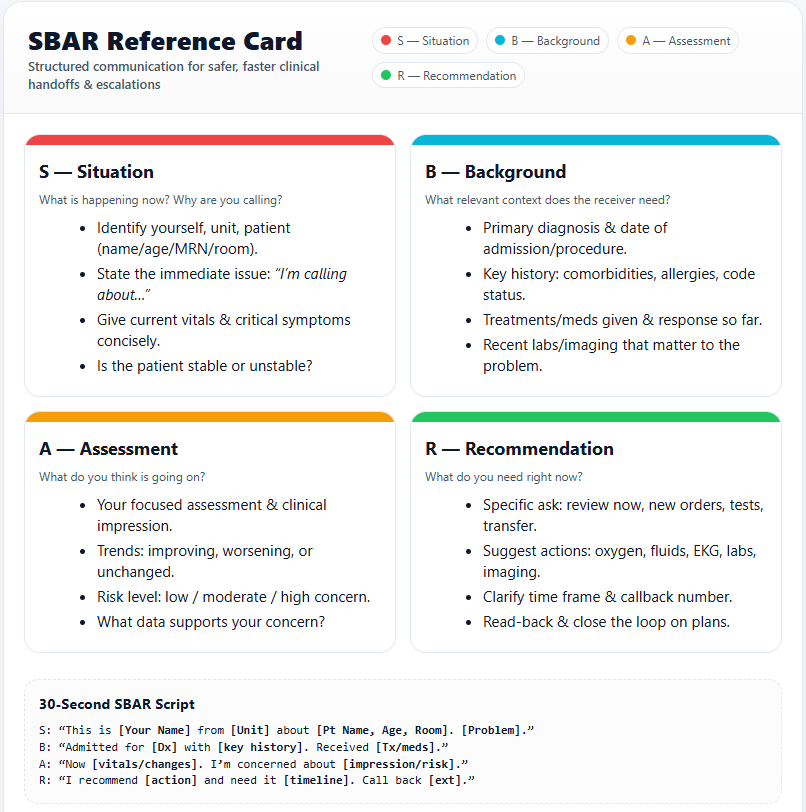Why SBAR Provides Clear Communication
Patient Safety
Why SBAR Provides Clear Communication
Improve patient safety and team communication with this SBAR reference card. Covers Situation, Background, Assessment, and Recommendation with quick scripts, note templates, and tips for concise, effective handoffs and escalations.
On this page
SBAR is a standardized communication framework used in healthcare (and other high-risk industries) to ensure that important information is conveyed clearly, concisely, and in a structured way. It’s especially common in hospitals for nurse-to-physician or interprofessional communication.
SBAR stands for:
S – Situation
- State the immediate issue or reason for the communication.
- Example: “I’m calling about Mr. Smith in room 210. He’s complaining of sudden chest pain.”
B – Background
- Provide relevant context or history that helps the listener understand the situation.
- Example: “He has a history of coronary artery disease and had a stent placed last year. He’s been stable until now.”
A – Assessment
- Share your clinical assessment, observations, and what you think is happening.
- Example: “His BP is 90/60, HR 120, and O₂ sat dropped to 88% on room air. I’m concerned this could be cardiac ischemia.”
R – Recommendation (or Request)
- Clearly state what you need or recommend next.
- Example: “I recommend you come assess him right away. Should I prepare to give oxygen and get an EKG?”
✅ Why SBAR is useful:
- Promotes efficient communication in urgent or routine situations.
- Helps reduce errors and miscommunication.
- Creates a shared mental model between team members.
- Encourages confidence in junior staff when speaking with physicians or supervisors.
SBAR Reference Card

